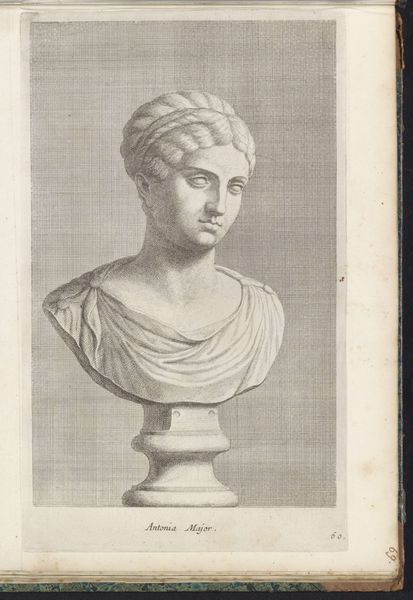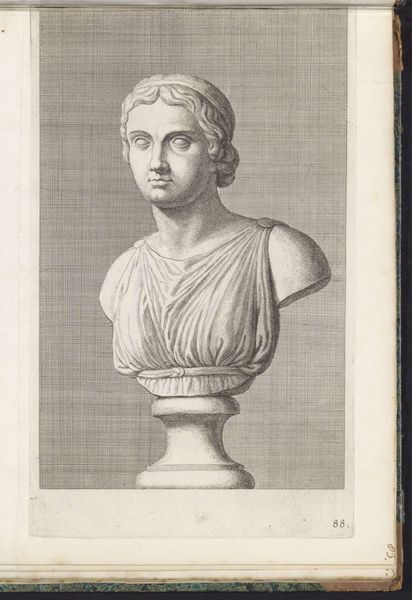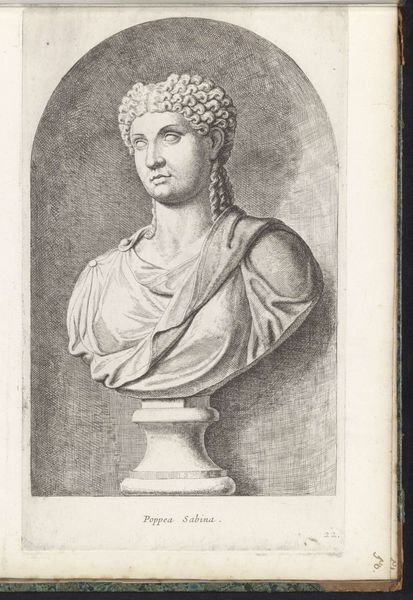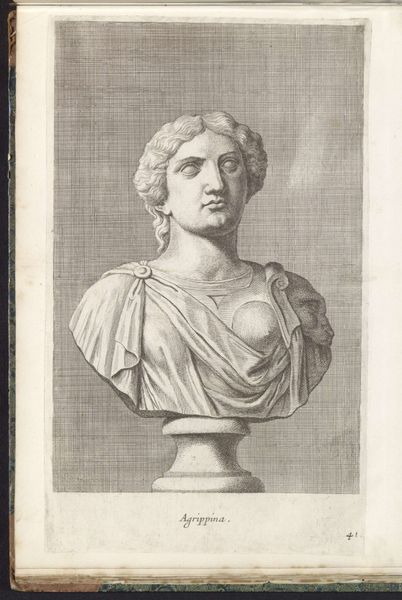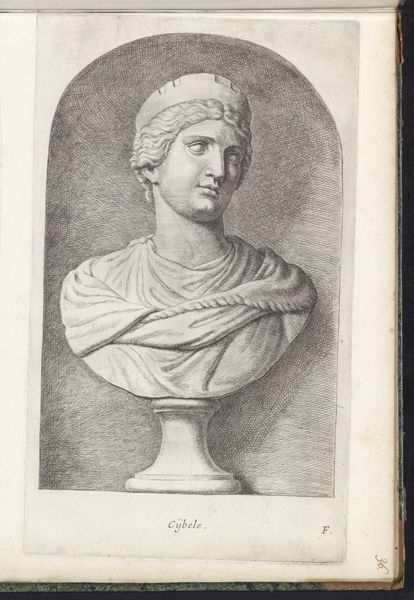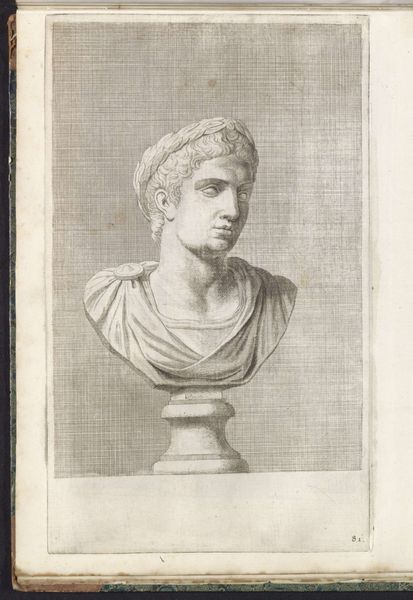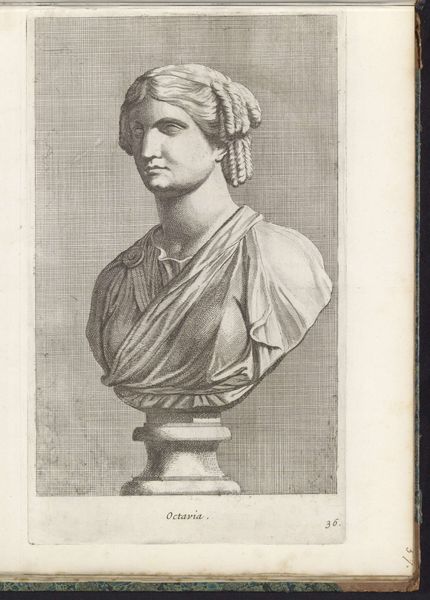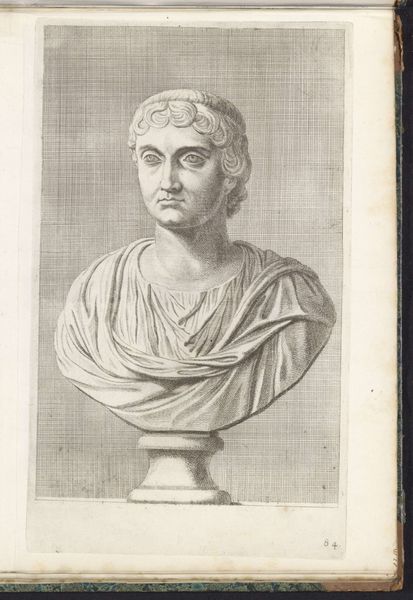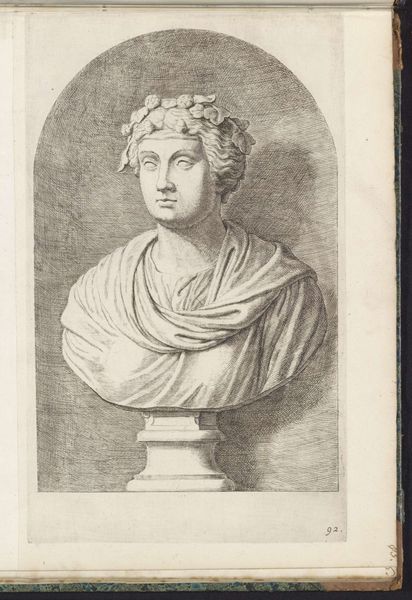
engraving
#
portrait
#
baroque
#
portrait drawing
#
history-painting
#
engraving
Dimensions: height 325 mm, width 194 mm
Copyright: Rijks Museum: Open Domain
Hubert Quellinus made this print titled 'Buste van Flavia', but the date of its creation is unknown. This print reflects the enduring fascination with classical antiquity during the 17th century, particularly in the Netherlands. It depicts a bust, an artistic form favored by the Romans, and suggests an interest in Roman history and culture. Made in the Netherlands, this print speaks to the prevailing artistic and intellectual climate of the time. Consider the Dutch Republic's economic prosperity, its engagement with international trade, and its embrace of humanist ideals. These factors created fertile ground for art that engaged with the classical past. Engravings like this one played a crucial role in disseminating knowledge about classical art. They were not just aesthetic objects but also tools for education and cultural transmission. Art historians often turn to period writings, such as artists' biographies and treatises on art, to contextualize works like this. By understanding the social and institutional context, we get a better grasp of its meaning and significance.
Comments
No comments
Be the first to comment and join the conversation on the ultimate creative platform.
